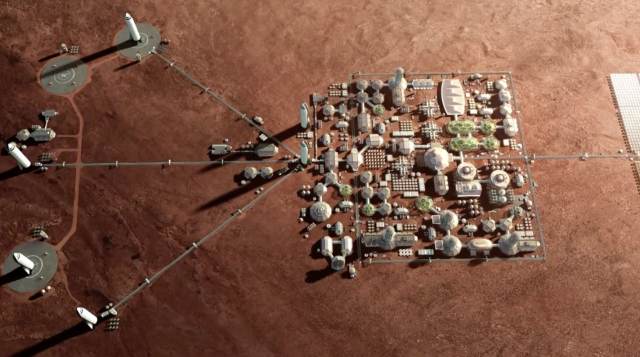An international group of researchers proposed using photoelectrochemical cells to provide extraterrestrial colonies of humanity with oxygen and fuel.
Long-term space missions have exactly the same problems as "green" energy on Earth: they require reliable, stable and efficient systems for converting and storing solar energy. On the ISS, about a third of the energy generated by solar panels is spent on oxygen production, and all systems have long been outdated and often fail. If humanity plans to start colonizing the Solar System, more compact and reliable systems will be needed to ensure the vital activity of future colonists.
One of the options under consideration is photoelectrochemical cells capable of converting light energy into electricity and fuel. Moreover, in conditions of weightlessness, they can be no less effective than on Earth. The compact monolithic construction and relatively simple device will allow not only to easily transport cells using spaceships, but also to produce them in colonies.
An international team of researchers from Germany, Switzerland and the UK conducted calculations to assess the effectiveness of photoelectrochemical devices in the conditions of the Moon and Mars. Scientists have clarified the spectrum of Martian solar radiation, established the limits of the effectiveness of devices for electrolysis of water and carbon dioxide binding powered by solar energy, and also assessed the technological viability of photoelectrochemical devices in space.
According to the results of the work published in the journal Nature Communications, in combination with solar concentrators and self-cleaning panels that prevent their contamination with dust, photoelectrochemical cells will be able to provide a Martian colony with fuel. To do this, they will use hydrogen obtained from the decomposition of water (from Martian ice) by electrolysis and carbon dioxide from the atmosphere of the Red Planet. Then both of these components by the Sabatier reaction will allow the synthesis of methane. But to work in a lunar colony, even concentrators will not be required, and water from the lunar ice will become a source of oxygen for people living on the Earth's satellite.
The aim of further research should be to improve solar concentrators to improve the output power or the photoelectrochemical cells themselves to ensure their operation in low current conditions. In addition to space applications, such devices can also be useful on Earth, providing energy to remote settlements, such as polar stations.
It should be noted that the provision of oxygen and methane due to photoelectrochemical cells has a couple of weaknesses. Firstly, 50 percent of the time such cells will not work due to the night. This means that the mass of both the cells themselves and the methane synthesis systems should be twice as high as if the colonists used a nuclear reactor as a source of electricity for chemical reactions.
Secondly, photoelectrochemical cells on Mars, even during the day, can be rationally used only in low latitudes. Already in temperate latitudes in winter they will give several times less energy than in summer, which will significantly limit the average annual productivity of such systems for oxygen and methane.

